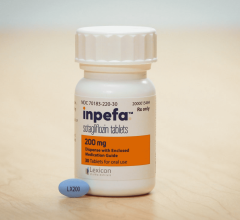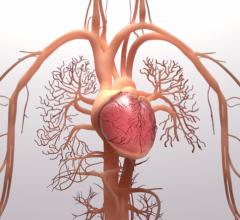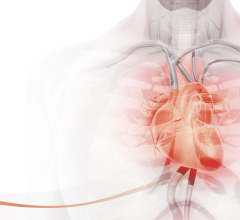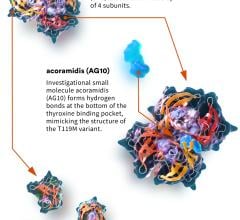Despite advances in our understanding of the pathophysiology of pain and the pharmacology of analgesic drugs, as well as increasing emphasis on adequate pain management [1], pain control remains inadequate in hospitalized patients. This is especially the case in intensive care units (ICU) where concerns regarding hemodynamic stability and respiratory depression limit administration of analgesics [2]. In 1996, the SUPPORT trial found nearly 50 percent of the critically ill patients in the study reported pain, with almost 15 percent of those reporting severe or moderately severe pain at least half of the time [3].
Sources of pain in the ICU patients include the primary illness, surgery, and trauma, [2]. In addition, the presence of invasive lines and tubes, immobility, suctioning, and other medical and nursing interventions are also associated with significant pain, yet are often overlooked [2, 4-7]. Anxiety associated with the ICU environment, especially mechanical ventilation, can greatly exacerbate the patient’s perceived level of pain [7].
Undertreatment of pain is due to a number of factors related to knowledge, skills and attitudes of clinicians, including concerns for side effects of analgesic drugs.
Consequences of inadequately treated pain
Lack of sufficient pain control in the intensive care unit can have both long- and short-term deleterious effects [2, 7]. Pain causes sympathetic stimulation and a hypermetabolic stress response, resulting in body protein loss, hyperglycemia, immunosuppression, poor wound healing, and the release of antidiuretic hormone and aldosterone. Tachycardia and hypertension increase myocardial oxygen consumption, and sympathetically-mediated vasoconstriction can augment tissue ischemia [2, 7]. The effects pain has on respiratory mechanics are well-documented, especially in patients recovering from thoracic, cardiac, or abdominal surgery [2]. The strong emotional aspect of pain can have long-term effects, including depression, anxiety, and post-traumatic stress disorder [2]. Inadequately treated pain result in increased morbidity, prolonged hospitalization and increased health costs. On the other hand, adequately treated pain allows earlier ambulation and rehabilitation, and may reduce the possibility of chronic pain syndromes. Therefore, adequate pain management is increasingly emphasized.
Assessment of pain
The first step in the management of pain, commonly overlooked, is assessment of pain. Because pain is a subjective experience, patients' self-reports should be the first information on which clinicians should rely [8]. The tools used for assessment of pain in patients who can communicate include verbal scale (0-to-10), numerical scale (0-to-10), visual analog scale, and categorical scale (i.e., mild, moderate, and severe pain) as well as the short-form McGill Pain Questionnaire [9]. Pain scales with faces ranging from smiling to crying can be used in adults who cannot communicate and in very young children.
In critically ill patients self reports may not be possible or are unreliable due to sedation, mechanical ventilation, or changes in patients' mental status. When patients are unable to express themselves, physiological parameters (e.g., increased blood pressure, increased heart rate and increased respiratory rate) and behavioral observation (e.g., verbal expression [e.g., moaning, crying], facial expressions [e.g., grimacing or wincing], and activity [e.g., reaction to physical examination, decreased movement]) can be used to assess pain [7, 10]. A behavioral pain scale developed to detect and quantify pain by assigning scores from 1-4 on three subscales (facial expression, upper limb movements, and compliance with mechanical ventilation) has been shown to have good inter-rater reliability and correlation with both painful procedures [4, 11, 12], and analgesic dosing [11].
Because observable indicators are not reliable measures for pain assessment, absence of behavioral response should not be considered as absence of pain [8]. The Agency for Health Care Policy and Research strongly recommends that observable indicators become part of pain assessment when patients cannot express themselves [8]. More importantly, pain should be assessed and then reassessed after intervention to document pain relief [8].
Management of pain
Pain management can be divided into pharmacological and non-pharmacological interventions [2, 13-15]. Opioids, particularly morphine, hydromorphone, and fentanyl, remain the mainstay of pain therapy. The intravenous route, either intermittent bolus or continuous infusion, is preferred in the critical care setting because absorption may vary with other routes. Opioid-related side effects include respiratory depression, hypotension, nausea and vomiting, decreased intestinal motility, and urinary retention as well as seizures, hallucinations, and excessive somnolence. Patients with renal failure are at a higher risk of developing opioid-related side effects because of accumulation of active metabolites (e.g., morphine-6-glucuronide or normeperidine) and therefore, should be monitored very closely for opioid-related side effects. Normeperidine-induced seizures have been reported in patients with normal renal function. Therefore, meperidine should not be used in critically ill patients. Because the opioid-related adverse effects may delay recovery, non-opioid analgesics should be used whenever possible. Of note, tolerance may develop with prolonged use [15].
Local anesthetic techniques can be used to provide safe and effective analgesia. These techniques include wound infiltration, peripheral nerve blocks (e.g., brachial plexus or femoral nerve blockade), and epidural analgesia. Painful procedures (e.g., line placement) should be performed under local anesthetics, whenever possible. Local anesthetic techniques have a high success rate with minimal complications and provide significant benefits in high risk patients They are, however, extremely underutilized.
Nonsteroidal anti-inflammatory drugs (NSAIDs) including cyclooxygenase-2 specific inhibitors are particularly useful for treating the pain of acute inflammatory processes. However, it is important to realize that NSAIDs have a ceiling effect. Furthermore, NSAIDs are associated with side effects such as gastropathy and gastrointestinal ulcer formation and related complications, impaired hemostasis, and nephrotoxicity.
Dexmedetomidine, an alpha-2 agonist was recently approved by the Food and Drug Administration specifically for sedation and analgesia as well as a lack of respiratory depression [16]. It has been used as a sole analgesic or as adjunct to opioids. However, the analgesic effect of dexmedetomidine is significantly less than that of opioids. Its widespread use has been limited by its high cost and potential side effects (e.g., bradycardia and hypotension), though some studies have shown a net cost benefit due to shorter ICU and hospital stays [4].
Sedatives are often used concomitantly with analgesics. Benzodiazepines are effective in relieving anxiety, but may be deliriogenic, and prolonged infusions of lorazepam can cause propylene glycol toxicity (used as diluent in current preparations) [4]. Propofol is commonly used for sedation, especially for patients on long-term mechanical ventilation. It is easily titrated and has rapid onset and offset.
Nonpharmacological pain interventions used in critically ill patients include frequent repositioning, endotracheal suctioning to promote patients' comfort, oral care, wound care, physical therapy and massage therapy.
Summary
Pain management is essential to the care of critically ill patients. It should be made a priority in a systems-based, integrated care plan. Delivery of pain management has been impeded by traditions and misconceptions, which have resulted in suboptimal application of the currently available methods of pain control. In order to be appropriately managed, pain must first be adequately assessed. Although pain is difficult to assess in non-verbal patients, a combination of physiologic and behavioral indicators should be helpful. The use of a pain flowsheet can facilitate the documentation of pain assessment and reassessment thereby improving the effectiveness of pain control strategies. Individualized pharmacotherapy in combination with adjuvants (multimodal analgesia techniques) is the cornerstone of pain management. There should be an increased emphasis on multimodal analgesia techniques and the prevention of breakthrough pain. There is increasing realization that availability of acute pain service improves management of pain. Research is needed to develop tools to enhance pain assessment and management and to improve the quality of care for critically ill patients.
The complete article including references is available online at www.AcuityCare.net.
References
1. Joint Commission on Accreditation of Healthcare Organizations. Pain Assessment and Management: An Organizational Approach. Oakbrook, IL, JCAHO 2000.
2. Szokol JW, Vender JS. Anxiety, delirium, and pain in the intensive care unit. Crit Care Clin. 2001; 17: 821-842.
3. Desbiens NA, Wu AW, Broste SK, et al. Pain and satisfaction with pain control in seriously ill hospitalized adults: Findings from the SUPPORT research investigations. Crit Care Med. 1996; 24: 1953-1961.
4. Fraser GL, Riker RR. Sedation and analgesia in the critically ill adult. Curr Opin Anaesthesiol. 2007;20:119-123.
5. Puntillo KA. Pain experience of intensive care unit patients. Heart Lung. 1990;19:526-533.
6. Wilson VS. Identification of stressors related to patients’ psychologic response to the surgical intensive care unit. Heart Lung. 1987;16:267-273.
7. Hamill-Ruth RJ, Marohn L. Evaluation of pain in the critically ill patient. Crit Care Clin. 1999;15:35-54.
8. Agency for Health Care Policy and Research. Acute pain management: operative or medical procedures and trauma, part 1. Clin Pharm. 1992;11;309-331.
9. Kwekkeboom KL, Herr K. Assessment of pain in the critically ill. Crit Care Nurs Clin North Am. 2001;13:181-194.
10. Murray MJ. Pain problems in the ICU. Crit Care Clin. 1990;6:235-253.
11. Payen JF, Bru O, Bosson JL et al. Assessing pain in critically ill sedated patients by using a behavioral pain scale. Crit Care Med. 2001;29:2258-2263.
12. Aissaoui Y, Zeqqwagh AA, Zekraoui A et al. Validation of a Behavioral Pain Scale in Critically Ill, Sedated, and Mechanically Ventilated Patients. Anesth Analg. 2005;101:1470-1476
13. Payen JF, Chanques G, Mantz J, et al. Current practices in sedation and analgesia for mechanically ventilated critically ill patients: a prospective multicenter patient-based study. Anesthesiology 2007; 106: 687-95.
14. Shapiro BA, Warren J, Egol AB, et al. Practice parameters for intravenous analgesia and sedation for adult patients in the intensive care unit: an executive summary. Crit Care Med 1995; 23: 1596-600
15. Pandharipande P, Ely EW. Narcotic-based sedation regimens for critically ill mechanically ventilated patients. Crit Care 2005; 9: 247-8.
16. Martin E, Ramsay G, Mantz J, Sum-Ping ST. The role of the alpha-2-adrenoceptor agonist dexmedetomidine in postsurgical sedation in the intensive care unit. J Intensive Care Med 2003; 18: 29-41


 July 10, 2024
July 10, 2024 








